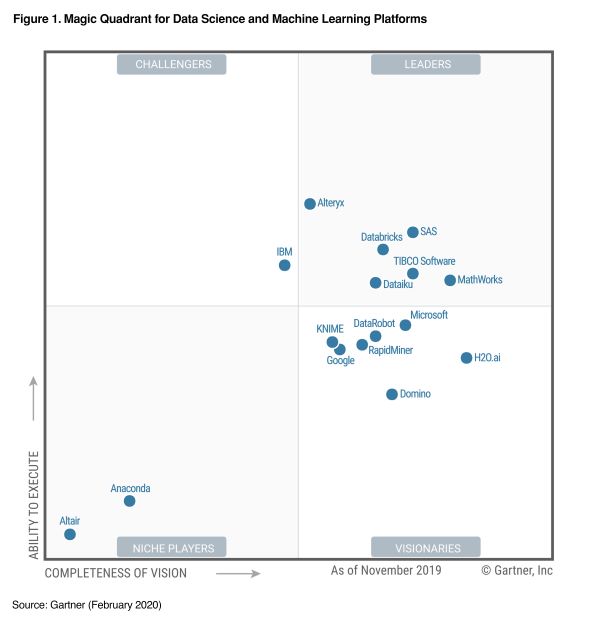MathWorks Is a Leader in the Gartner Magic Quadrant for Data Science and Machine Learning Platforms 2020
 We believe our recognition as a Leader in Gartner's 2020 Magic Quadrant for Data Science and Machine Learning demonstrates our ability to help organizations:
We believe our recognition as a Leader in Gartner's 2020 Magic Quadrant for Data Science and Machine Learning demonstrates our ability to help organizations:
- Equip teams with limited AI or data science skills as well as those with advanced skills to apply AI successfully
- Incorporate AI across the complete system design workflow including data preparation, analytics and modeling, simulation and test, and production
- Deploy AI models on embedded devices, edge, enterprise systems, and the cloud
- Use Simulink to tackle system design, integration, and validation challenges when developing AI-driven systems
- Automate labeling data including images, videos, signals, and audio recordings
- Graphically design and analyze deep learning using the Deep Network Designer app
- Build advanced network architectures like GANs, Siamese networks, attention networks, and variational autoencoders
- Import and export models with other deep learning frameworks (such as TensorFlow and PyTorch) using the ONNX model format
- Train reinforcement learning policies to implement controllers and decision-making algorithms for complex systems such as robots and autonomous systems
- Automate deployment of inference models to CPUs, GPUs, and FPGAs.
- Get Ready for AI with MATLAB
- MATLAB for Deep Learning
- MATLAB for Machine Learning
- MATLAB for Data Science
- MATLAB for Enterprise and IT Systems
- Category:
- Deep Learning
 Cleve’s Corner: Cleve Moler on Mathematics and Computing
Cleve’s Corner: Cleve Moler on Mathematics and Computing The MATLAB Blog
The MATLAB Blog Guy on Simulink
Guy on Simulink MATLAB Community
MATLAB Community Artificial Intelligence
Artificial Intelligence Developer Zone
Developer Zone Stuart’s MATLAB Videos
Stuart’s MATLAB Videos Behind the Headlines
Behind the Headlines File Exchange Pick of the Week
File Exchange Pick of the Week Hans on IoT
Hans on IoT Student Lounge
Student Lounge MATLAB ユーザーコミュニティー
MATLAB ユーザーコミュニティー Startups, Accelerators, & Entrepreneurs
Startups, Accelerators, & Entrepreneurs Autonomous Systems
Autonomous Systems Quantitative Finance
Quantitative Finance MATLAB Graphics and App Building
MATLAB Graphics and App Building








Comments
To leave a comment, please click here to sign in to your MathWorks Account or create a new one.